One of the most common questions that gets asked about nootropics is “What nootropic is the most like Adderall?” It's a question that can be found on nootropics message boards around the internet, and it's one that we've been asked countless times.
 If we had to pick a single nootropic as the best Adderall alternative, it would have to be phenylpiracetam. But, by itself, it really can't compare to Adderall. As of now, no single nootropic even comes close to being as motivating, mood-enhancing, and focus-improving as the powerful prescription drug Adderall.
If we had to pick a single nootropic as the best Adderall alternative, it would have to be phenylpiracetam. But, by itself, it really can't compare to Adderall. As of now, no single nootropic even comes close to being as motivating, mood-enhancing, and focus-improving as the powerful prescription drug Adderall.
You probably noticed that we said that no single nootropic can compare to Adderall. However, when we start stacking nootropics, we can recreate just about all of it's positive effects.
After doing tons of research, asking around the internet on nootropics message boards, and testing over a dozen different stacks ourselves, we've come up with the the Adderall stack. This is the ultimate stack to recreate the effects of Adderall.
As with all nootropics, everyone's results are gonna be different. But this is the stack that has the most Adderall-like effects for everyone that tries it. If you're looking to recreate the benefits of Adderall, without all the side effects, this is the stack for you.
First we're gonna go over the effects of Adderall. Then we'll look at how these effects can be replicated by using the basic Adderall stack. Lastly, we'll look at what additional nootropics can be added for even more benefits in the advanced Adderall stack.
The Effects of Adderall
Adderall is a prescription medication that is approved for the treatment of narcolepsy and attention deficit hyperactivity disorder (ADHD)1. It's also prescribed for a number of off-label uses.

Adderall is unquestionably effective, but comes with a lot of side effects.
It's made up of 4 different amphetamine salts: dextroamphetamine sulfate, dextroamphetamine saccharate, amphetamine sulfate, and amphetamine aspartate2. This combination provides a number of different effects in the body and brain.
Adderall is a potent stimulant3. As such, it affects several aspects of the central nervous system. Some of the positive effects include increased focus, motivation, alertness, and energy, and improved mood.
However, it also comes with a lot of potential side-effects. Some common side effects include insomnia, reduced appetite, anxiety, restlessness, irritability, headache, dry mouth, abdominal pain, and increased blood pressure4. Less common but more serious side effects include painful urination, uneven heartbeats, tremors, hallucinations, extreme hypertension, and psychosis.
There's no question that Adderall is effective. Its popularity is a testament to this. Approximately 1 in 3 college students admit to using Adderall, whether they have a prescription or not5.
But with such a lengthy list of side effects, it should come as no surprise that a lot of people are looking for alternatives to Adderall. There are several products on the market right now that claim to be Adderall alternatives. Unfortunately, none of these products can even come close to replicating the powerful effects of this prescription drug.
We've come up with what we believe to be the best solution to the Adderall problem. The Adderall stack that we've put together is meant to replicate all the positive effects of Adderall without most of the negatives.
The Basic Adderall Stack
The basic Adderall stack consists of 3 different nootropics. Most users that try this stack experience most of the positive benefits of Adderall, without experiencing most of the negative ones.
The 3 nootropics in the basic Adderall stack are phenylpiracetam, adrafinil, and citicoline. These nootropics are all effective by themselves. But when taken together, seem to have a synergistic effect. Let's look at what each of these substances do.
Phenylpiracetam
This potent nootropic is an analog of the well-known drug piracetam. Studies on humans and animals have shown that it has a number of benefits, including improved memory, motivation, and mood, improved sports performance, and decreased anxiety67.
Phenylpiracetam is a prescription drug in Russia and some European countries. It is prescribed for its general stimulant properties and to increase tolerance to stress and extreme temperatures8.

Phenylpiracetam brings a number of benefits to the basic Adderall stack. First of all, it has some stimulant properties. It's not as stimulating as Adderall, but it shares some of its ability to stimulate the central nervous system. Unlike Adderall, though, it can also have anxiety-reducing effects.
Another benefit of phenylpiracetam is that it has a mood-boosting, antidepressant effect for many users. One of the most attractive qualities of Adderall is that it acts as a mood-brightener. Unfortunately, this is usually followed by a “crash” in mood several hours later. Phenylpiracetam's mood-boosting effects are more subtle than Adderall. But most users say that they don't experience the dreaded crash a few hours later.
Lastly, phenylpiracetam is able to improve memory and motivation. These are two of Adderall's nootropic benefits. Phenylpiracetam is able to improve memory and motivation without the overstimulation and anxiety that often come with Adderall use.
You can learn more about phenylpiracetam here: Phenylpiracetam – The Best Adderall Alternative.
Adrafinil
The second ingredient in the basic Adderall stack is adrafinil. This is a eugeroic (wakefulness-promoting agent) that converts to modafinil in the body10.
Modafinil is a prescription drug in the United States. It is prescribed to treat narcolepsy, sleep-disorders, and a number of other conditions11. Adrafinil, however, is available in the U.S. without a prescription. It is sold as a dietary supplement.

Like phenylpiracetam, adrafinil is on WADA's banned substances list9. Professional athletes are prohibited from using adrafinil because it is able to improve performance, alertness, mood, and energy levels. However, research shows that it is still being used by a lot of professional athletes12. This can be interpreted as a testament to its effectiveness. If athletes would risk getting banned for using it, it must work!
And work it does. Adrafinil brings a number of benefits to this stack. First and foremost, it provides the wakefulness and alertness that Adderall does. It does this without the overstimulation that often comes with Adderall use.
Adrafinil also has mood-boosting properties. Combined with phenylpiracetam, these effects become amplified. The same is also true of both these nootropics' ability to increase motivation.
You can learn more about adrafinil here: Adrafinil For Focus.
Citicoline (CDP-Choline)
The last nootropic in our basic Adderall stack is citicoline. Also known as CDP-choline, this is a cholinergic nootropic that has a number of benefits in the body and brain. Some of these benefits include improved memory, attention, and motivation1314.
Citicoline converts to choline and uridine in the body15. This results in an increase in acetylcholine in the brain16. Acetylcholine is a neurotransmitter that is known to play a role in memory, learning, motivation, muscle activation, and arousal17.

Second, some nootropics can cause headaches as a side effect. This is thought to be caused by insufficient choline levels in the brain. Many users that get headaches report that this side effect can be reduced or eliminated by taking a choline source, like citicoline.
Citicoline is what brings the basic Adderall stack together. It protects against some of the potential side effects of phenylpiracetam and adrafinil. And it also works synergistically with them to increase memory, attention, wakefulness, and motivation.
You can learn more about citicoline here: CDP-Choline For Memory and Motivation.
Basic Adderall Stack Dosages
If you are new to nootropics, or have only tried a few mild nootropics, you should start with the beginner dosage. The goal is to get the benefits of this stack with the smallest dosage possible.
It should also be noted that this stack should be taken early in the day (assuming you want to sleep at night). All 3 of these nootropics have stimulating qualities. Adrafinil (and the substance it converts to in the body, modafinil) is prescribed specifically to increase wakefulness. Taking any or all of the nootropics later in the day could result in insomnia (inability to fall/stay asleep).
Beginner Dosages
- Phenylpiracetam – 100 mg
- Adrafinil – 300 mg
- Citicoline – 500 mg
Intermediate Dosages
- Phenylpiracetam – 200 mg
- Adrafinil – 600 mg
- Citicoline – 1,000 mg
Advanced Dosages
- Phenylpiracetam – 300-400 mg
- Adrafinil – 900-1200 mg
- Citicoline – 1,500-2,000 mg
For best results, take all 3 nootropics in the basic Adderall stack early in the day, preferably on an empty stomach. If you experience nausea or upset stomach, you can take them with a small meal. This may slightly reduce the effectiveness of the stack, as well as delay the onset.
Side Effects/Warnings
All of the nootropics in the basic Adderall stack are generally well-tolerated by most people. Side effects are rare, and are usually reversed upon cessation.
However, some people may experience some side effects. The most common side effects are headache, upset stomach, nausea, insomnia, restlessness, dry mouth, changes in blood pressure, and dizziness.
Some side effects can be reduced or eliminated by making some changes in dosing. If you experience unwanted insomnia, try taking this stack earlier in the day. If you experience nausea and upset stomach, you may be able to reduce or eliminate this by taking the Adderall stack with a small meal, or eating a small meal shortly (~30 min) after.
Whenever you start or stop any new supplement, drug, vitamin, mineral, plant, herb, or anything else, you should always check with your doctor before doing so. Most physicians are not familiar with nootropics. You may have to educate your doctor about what they are.
Lastly, if you are taking a monoamine oxidase inhibitor (MAOI), you should probably not take any of the nootropics in this stack. Although we could not find any adverse reactions in the literature, taking certain nootropics with an MAOI could lead to a potentially dangerous situation known as serotonin syndrome.
The Advanced Adderall Stack
For most people, the basic Adderall stack will be adequate to experience all the benefits that they are looking for. However, as everyone's brains and bodies are different, some people may need a little extra to really feel the power of the Adderall stack.
That's where the advanced Adderall stack comes in. It contains the same 3 nootropics as the basic stack. But it also adds 3 more to this already-powerful stack.
You can add any or all of these to the basic stack. They are all effective on their own. But when they are all taken together, they have a synergistic effect.
Caffeine
We won't say too much about caffeine here, since most people are intimately familiar with it. In fact, if you are like most people, you've already had some caffeine today18.

Adding some caffeine to the Adderall stack will help to increase all of these desirable effects. Here are the recommended dosages to add to the stack:
- Beginner – 100 mg
- Intermediate – 200 mg
- Advanced – 300-400 mg
You can learn more about the nootropic benefits of caffeine here: Nootropics That Stack Well With Caffeine.
L-Theanine
Theanine is an amino acid that is found in a number of plants and herbs. One of the most well-known sources of theanine is green tea.

Theanine brings a couple things to the Adderall stack. First of all, it helps to reduce some of the negative effects of caffeine and other stimulants in the stack. Theanine has a calming effect, but without causing sedation.
Also, it helps to boost the effectiveness of the caffeine, while reducing its side effects. Taken by itself, the effects of theanine are mild, if noticeable at all. But when combined with caffeine, they work together creating a synergistic effect.
Here are the recommended dosages for adding L-theanine to the stack:
- Beginner – 100 mg
- Intermediate – 200 mg
- Advanced – 300-400 mg
Notice that the dosages for l-theanine are the same as those for caffeine. A 1:1 ratio of caffeine:theanine seems to be optimal for most people.
You can learn more about l-theanine here: L-Theanine – A Calming Nootropic.
Aniracetam
The last component of the advanced Adderall stack is aniracetam. This is a popular nootropic that is known to improve memory26 and mood27, while reducing anxiety28.

Aniracetam adds a few different things to the Adderall stack. First, it is able to improve the mood of most of its users. Second, it seems to reduce anxiety without causing sedation. Third, many users report that aniracetam helps with “collective and holistic thinking”29. And lastly, aniracetam is known to improve memory.
Here are the recommended aniracetam dosages for this stack:
- Beginner – 400 mg
- Intermediate – 600 mg
- Advanced – 750 mg
You can learn more about aniracetam here: Aniracetam For Anxiety and Focus.
Advanced Adderall Stack Dosages
To recap, here are all the dosages for the advanced Adderall stack (AAS):
Beginner AAS
- Phenylpiracetam – 100 mg
- Adrafinil – 300 mg
- Citicoline – 500 mg
- Caffeine – 100 mg
- L-Theanine – 100 mg
- Aniracetam – 400 mg
Intermediate AAS
- Phenylpiracetam – 200 mg
- Adrafinil – 600 mg
- Citicoline – 1,000 mg
- Caffeine – 200 mg
- L-Theanine – 200 mg
- Aniracetam – 600 mg
Advanced AAS
- Phenylpiracetam – 300-400 mg
- Adrafinil – 900-1,200 mg
- Citicoline – 1,500-2,000 mg
- Caffeine – 300-400 mg
- L-Theanine – 300-400 mg
- Aniracetam – 750 mg
Conclusion
And there you have it: the Adderall stack. With the nootropics that are available today, this is the closest we can come to recreating the subjective effects of Adderall.
There's a common phrase in the nootropics world: “Your mileage may vary (YMMV).” Everyone responds differently. A lot of people may find that this stack actually works better than Adderall. It certainly has the potential to do so.
But everyone is different. The only way to know if this stack will work for you is to try it yourself. It's recommended that you start with the beginner dosage of the basic Adderall stack. See how works for you. If you're happy with the results, great! If not, you can move on to the intermediate and advance dosages, or add the additional nootropics to create the advanced Adderall stack.
To learn more about nootropics, sign up for the Nootropics Zone newsletter. You'll get the free gift, The Ultimate Nootropics Quick Reference Guide.
References
1Adderall. (n.d.). Drugs.com. Retrieved April 7, 2016 from http://www.drugs.com/adderall.html
2Heal, D., Smith, S., Gosden, J., & Nutt, D. (2013). Amphetamine, past and present – a pharmacological and clinical perspective. J. Psychopharmacol., 27(6):479-496.
3Sulzer, D., Sonders, M., Poulsen, N., & Galli, A. (2005). Mechanisms of neurotransmitter release by amphetamines: a review. Progress in Neurobiology, 75(6):406-33.
4Adderall. (n.d.). Rxlist.com. Retrieved April 7, 2016 from http://www.rxlist.com/adderall-side-effects-drug-center.htm
5Adderall Statistics. (n.d.). StatisticsBrain.com. Retrieved April 7, 2016 from http://www.statisticbrain.com/adderall-statistics/
6Zvejniece, L., Svalbe, B., Veinberg, G., Grinberga, S., Vorona, M., Kalvinsh, I., & Dambrova, M. (2011). Investigation into stereoselective pharmacological activity of phenotropil. Basic & Clinical Pharmacology & Toxicology, 109(5):407-12.
7Malykh, A., & Sadaie, M. (2010). Piracetam and piracetam-like drugs: from basic science to novel clinical applications to CNS disorders. Drugs, 70(3):287-312.
8Kim, S., Park, J., Myung, S., & Lho, D. (1999). Determination of carphedon in human urine by solid-phase microextraction using capillary gas chromatography with nitrogen-phosphorus detection. The Analyst, 124(11):1559-1562.
9Prohibited List. (January 2016). World Anti-Doping Agency (WADA), Retrieved April 7, 2016 from https://wada-main-prod.s3.amazonaws.com/resources/files/wada-2016-prohibited-list-en.pdf
10Milgram, N., Callahan, H., & Siwak, C. (1999). Adrafinil: a novel vigilance pormoting agent. CNS Drug Reviews, 5(3):193-212.
11Modafinil. (n.d.). Drugs.com. Retrieved April 7, 2016 from http://www.drugs.com/cdi/modafinil.html
12Deventer, K., Roels, K., Delbeke, F., & Van Eenoo, P. (2011). Prevalence of legal and illegal stimulating agents in sports. Anal Bioanal Chem., 401(2):421-32.
13McGlade, E., Locatelli, A., Hardy, J., Kamiya, T., Morita, M., Morishita, K., Sugimura, Y., & Yurgelun-Todd, D. (2012). Improved attentional performance following citicoline administration in healthy adult women. Food and Nutrition Sciences, 3(6):769-773.
14Spiers, P., Myers, D., Hochanadel, G., Lieberman, H., & Wurtman, R. (1996). Citicoline improves verbal memory in aging. Arch Neurol., 53(5):441-8.
15Wurtman, R., Regan, M., Ulus, I., & Yu, L. (2000). Effect of oral CDP-choline on plasma choline and urudine levels in humans. Biochemical Pharmacology, 60(7):989-92.
16Alvarez, X., Sampedro, C., Lozano, R., & Cacabelos, R. (1999). Citicoline protects hippocampal neurons against apoptosis induced by brain beta-amyloid deposits plus cerebral hypoperfusion in rats. Methods and Findings in Experimental and Clinical Pharmacology, 21(8):535-40.
17Acetylcholine. (n.d.). Wikipedia. Retrieved April 7, 2016 from https://en.wikipedia.org/wiki/Acetylcholine
1824 remarkable caffeine consumption statistics. (2014). HealthResearchFunding.org. Retrieved April 7, 2016 from http://healthresearchfunding.org/remarkable-caffeine-consumption-statistics/
19Nehlig, A., Daval, J., & Debry, G. (1992). Caffeine and the central nervous system: mechanisms of action, biochemical, metabolic, and psychostimulant effects. Brain Res. Brain Res. Rev., 17(2):139-70.
20Bolton, S. (1981). Caffeine: psychological effects, use, and abuse. Orthomolecular Psychiatry, 10(3):202-211.
21Nehlig, A. (2010). Is caffeine a cognitive enhancer? Journal of Alzheimer's Disease, 20(Sup 1.):S85-94.
22Haskell, C., Kennedy, D., Milne, A., Wesnes, K., & Scholey, A. (2008). The effects of l-theanine, caffeine, and their combination on cognition and mood. Biological Psychology, 77(2):113-22.
23Park, S., Jung, I., Lee, W., Lee, Y., Park, H., Go, H., Kim, K., Lim, N., Hong, J., Ly, S., & Rho, S. (2011). A combination of green tea extract and l-theanine improves memory and attention in subjects with mild cognitive impairment: a double-blind placebo-controlled study. Journal of Medicinal Food, 14(4):334-343.
24Kimura, K., Ozeki, M., Juneja, L., & Ohira, H. (2007). L-theanine reduces psychological and physiological stress responses. Biological Psychology, 74(1):39-45.
25Owen, G., Parnell, H., DeBruin, E., & Rycroft, J. (2008). The combined effects of l-theanine and caffeine on cognitive performance and mood. Nutritional Neuroscience, 11(4):193-8.
26Cumin, R., Bandle, E., Gamzu, E., & Haefely, W. (1982). Effects of the novel compound aniracetam (Ro 13-5057) upon impaired learning and memory in rodents. Psychopharmacology (Berl)., 78(2):104-11.
27Nakamura, K., & Tanaka, Y. (2001). Antidepressant-like effects of aniracetam in aged rats and its mode of action. Psychopharmacology (Berl.), 158(2):205-12.
28Nakamura, K., & Kurasawa, M. (2001). Anxiolytic effects of aniracetam in three different mouse models of anxiety and the underlying mechanism. Eur J Pharmacol., 420(1):33-43.
29Aniracetam. (n.d.). Examine.com. Retrieved April 7, 2016 from https://examine.com/supplements/Aniracetam/

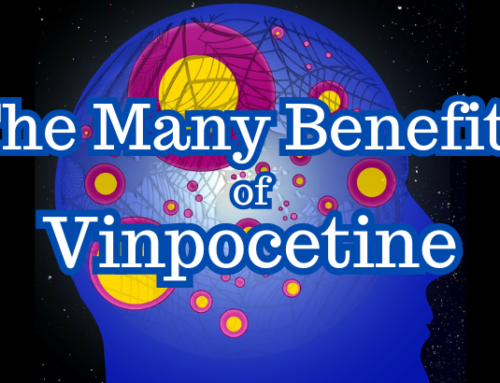
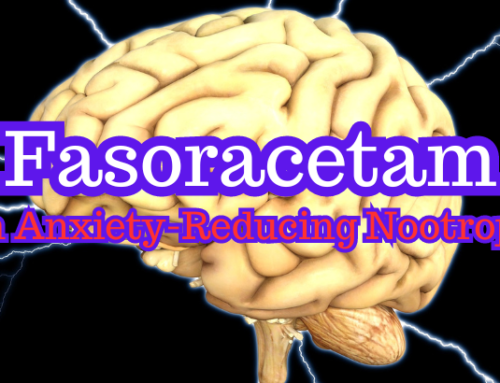
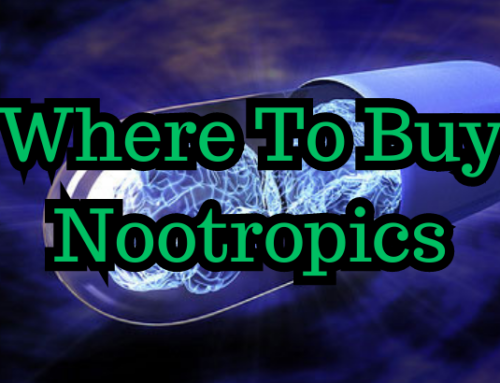
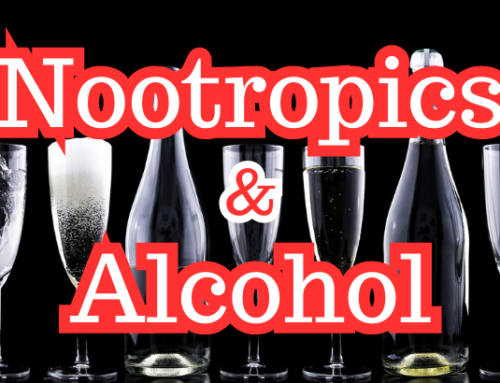
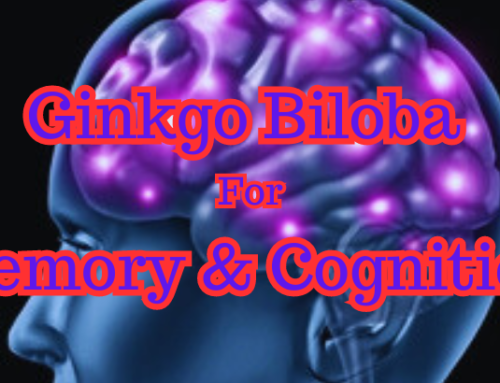

I have tried the advanced stack and I really like it but without the adrafinil. That is not a good nootropic IMO. I had a hard time sleeping for a couple days which makes sense since it is used to prevent sleep. Maybe it helps a little with concentration but the pheynlpiracetam does that for me. Phenylpiraceram is the star of the show but seems a bit much for daily use. Caffeine and Theanine are a great daily combo.
Can you take this combination while on Adderall OR is this for those that are have ADHD / take Adderall and want to take tolerance breaks, reduce their usage or Adderall and/or completely stop taking Adderall? Awesome info btw, definitely going to experiment & try it — was doing amateur stuff like L-Tyrosine, so this is all new info! 🙂
Thank you for the kind words! This stack is not intended to be taken with Adderall. It’s for people who want the effects of Adderall without actually taking it. Some of the nootropics in this stack could be potentially dangerous when taken with Adderall.
Thanks for this, just started 4 days ago with the beginner stack + caffiene to kick me out of my extreme apathy.
It really works to make you more alert. Here’s to extreme life changes 🙂
Be back in 30 days!
Can this stack (excluding caffiene) be taken in combination with L-Tyrosine, and B-12, safely?
Trying to find the best way to beat my Adderall addiction. Though, I’ve abused it for years (due to increase in tolerance as time has progressed), I’m looking to repair my brain as well as kick the habit. Will this further damage my neurotransmitters and serotonin production (naturally)?
I’ve used L-tyrosine and B12 with this stack and haven’t had any ill effects. You may want to look into the Happy Stack. A lot of people have successfully used it to repair damage from years of Adderall use/abuse.
Using the advanced adderall stack. have swapped out adrafinil for modafinil (cut tablet in half). Trying to figure out if this is still too much or not enough. Any ideas on comparison dosages?
That’s a good idea and I’m glad you brought it to my attention. When I wrote this detailed post, modafinil was hard to find while adrafinil was easily available, so I included it instead of modafinil. But now that modafinil is easy to source online, I may edit this post. As far as comparing doses, it’s been a long time since I’ve taken adrafinil. I don’t recall how it measures up compared to modafinil. I’m sure you can find that info somewhere online, though. Thanks for the comment!
I have found information that suggests you get a 1.5-2:3. So if you take 300mg of adrafinil you get about 150mg-200mg of modafinil. I am currently taking 600mg of adrafinil and previously have been sleeping 13hrs a day. With the dosage of adrafinil taken once when I get up, I have been able to extend my waking hours to 16 hours. My sleep is much better on adrafinil for some reason.
As a note, I have not felt sleepy when I know I need to go to bed. I would be up much longer than the 16 hours if I did not take my prescribed dose of seroquel, 100mg. So keep this in mind when trying to plan for sleep.